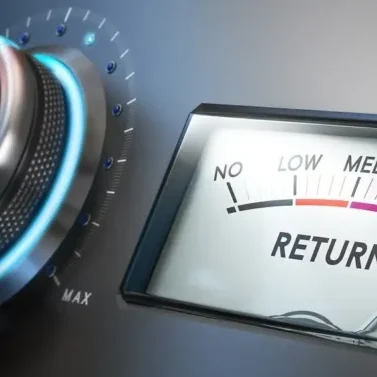MBO Case Study – Midsize Aviation Company
Summary: This article presents the case study of a management buyout (MBO) applied to a small/midsize aviation parts company. Although small management buyouts are not mentioned in the business popular press often, they can be an effective way to acquire a company.
Since the company is private (rather than publicly listed), all the names have been changed to protect the privacy of the participants. Any resemblance to a person or entity is purely coincidental. We cover the following:
- The business
- The sellers (married couple)
- The buyer (daughter)
- The management buyout
- Documentation
- Main challenge
- The solution
- The transaction
1. Supersonic Air Parts, Inc.
Supersonic Air Parts, Inc. was started by Jason and Sophia Anderson about 20 years ago. It started as a small, struggling supplier of aviation parts to airlines and related companies. It is considered a midsize player in their local industry.
Companies in the aviation supply industry tend to have heavy inventory. Supersonic Air Parts has a couple of warehouses filled with inventory and some machinery. The inventory has a market value of about $60 million. Additionally, the company has about $5 million in accounts receivable and $2.5 million in accounts payable. Lastly, Supersonic AirParts also has a bank line that is secured by all company assets and guaranteed by Jason and Sophia personally.
2. Jason and Sophia Anderson
Jason and Sophia Anderson have owned Supersonic Air Parts for the better part of two decades. Although things were difficult at the beginning, the company grew substantially over two decades. Some years ago, Jason and Sophia brought their daughter, Samantha, into the business. They started grooming her to take over operations. Samantha proved she had the necessary skills to operate the business and eventually become CEO of the company.
Both Jason and Sophia have reached the age at which they would like to retire and not have to worry about managing the business or guaranteeing its debt personally. Transferring the business to their daughter is an ideal option because:
- Their company and legacy stays in the family
- Samantha is well prepared for the job - and, lastly -
- Samantha is ready to grow the company to the next level
3. Samantha Anderson
Samantha Anderson is the daughter of Jason and Sophia Anderson. She has a degree in engineering and worked in engineering for a few years. After gaining work experience, she went to business school and earned an MBA. Once she completed her MBA, she worked in sales at a different company (different industry as well), and eventually rose to middle management. At that point, her parents asked her to join Supersonic Air Parts in a sales capacity.
As part of her leadership grooming process, Samantha rotated through a number of departments and eventually demonstrated the skills necessary to lead the company. Soon after, she was appointed CEO. Under her tenure, profits have remained stable and the company has done well.
4. The MBO transaction
The transaction was structured as a stock sale. However, the cost of the sale was determined by the buyer and seller as being a large percentage of the value of the assets of the company. Therefore, the MBO financing strategy the team decided to use was an asset-based loan combined with owner financing. Funds would be used to pay off the prior lender, to strengthen company cash flow, and to the pay the previous owners.
There is one important thing to note regarding this transaction. Although the transaction provides Jason and Sophia Anderson (owners) with a substantial payment, funds from the asset-based loan do not provide any payments to cover goodwill (the value of the brands, working operations, reputation, etc.).
In an operation like Supersonic Air Parts, goodwill can have substantial value. This issue would obviously create a problem for most transactions. In this case, goodwill is paid using owner financing. A loan is created between Jason, Sophia, and their daughter. The company has to pay a certain amount of funds amortized over a number of years. This arrangement satisfies the financial needs of Jason and Sophia and was approved by the asset-based lender.
5. Documentation
The documentation needed to underwrite this opportunity was relatively standard. The main documents the sellers had to provide were:
- Three years worth of balance sheets
- Three years worth of profit and loss statements
- Three years worth of tax returns
- Recent inventory appraisal report (from a third-party company)
- Recent Accounts Receivable Aging report
- Recent Accounts Payable Aging report
Additionally, the buyer had to be underwritten as well. She had to provide:
- Application for financing
- Personal tax returns
- Personal financial report
- Resume
6. The main challenge: inventory valuation
The main challenge we faced with this transaction was the inventory appraisal (valuation). The company's inventory had a market value of $60 million dollars. However, the lender required an appraisal of the inventory prior to the sale. This requirement is common in these types of transaction, and the lender used an appraiser who had worked with Supersonic Parts before and was familiar with the business.
The expectation was that the appraiser would determine the inventory's value to be roughly $50 million. The method used for the appraisal was an orderly liquidation value (OLV). After careful consideration, the appraiser determined that the OLV was only $42 million, $8 million short of expectations. This shortfall created a potential roadblock to the transaction, as it would require the current owners to take $8 million less as part of the externally financed component of the transaction.
7. The solution: owner-financing adjustment
The result of the appraisal surprised all parties involved. In many cases, this unexpected development is enough to derail a transaction. However, this transaction involved family members who wanted the transaction to succeed. To solve this issue, Jason and Sophia Anderson were willing to provide a larger owner-financing component to Sophia. This accommodation allowed all parties to become comfortable with moving forward.
8. The actual sale
As mentioned before, this transaction was structured as a stock sale collateralized by assets - rather than the more common asset sale. The transaction concluded with a simultaneous closing where the new lenders paid off the old lender. Remaining funds were disbursed to the company and to the sellers. Additionally, the owner-financing component was executed and the stock was finally transferred from the Andersons to their daughter.
Need to finance a management buyout?
The first step to work with us is to submit this form. Once we review it, one of our associates will contact you to discuss the specific details of your acquisition.
Additional resources: LBO Case Study - Small Transportation Company
Editor's note:
This information should not be considered legal or financial advice. Given the complexity of business acquisitions, this document is not guaranteed to be 100% accurate or cover every potential option. However, we make every effort to provide you with the best information. If you have comments, suggestions, or improvements, contact us via LinkedIn.






